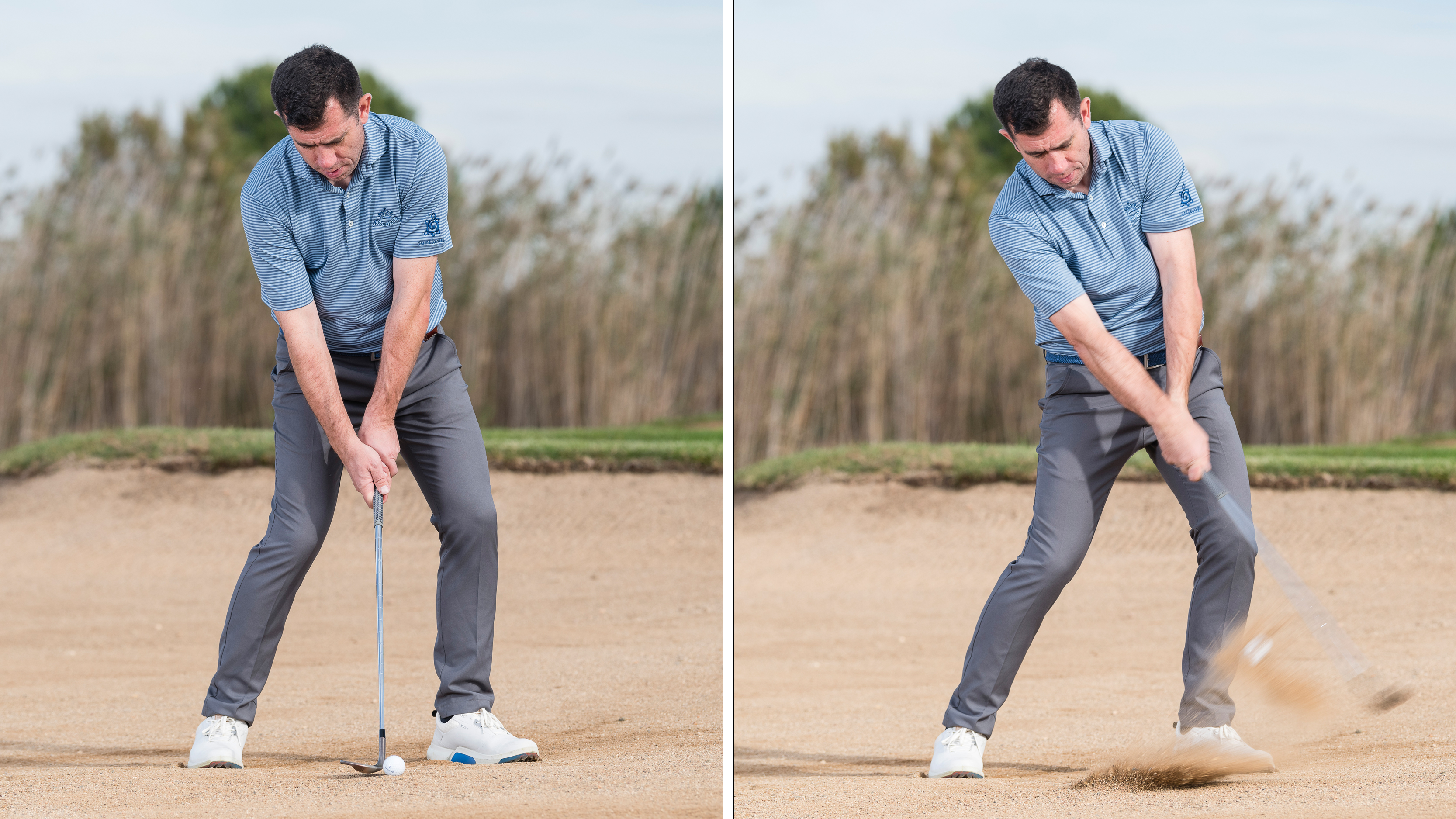Adapt To Any Lie In The Bunker With These Simple Set-Up Tips
In this video, PGA pro Dan Grieve explains how to escape the bunker when there's too much sand and when there's too little


Being able to judge a lie in the bunker and adjust your technique accordingly is a really useful skill to develop. In the video and article below, PGA pro and short game expert Dan Grieve shares his top tips.
So the key to being a good bunker play is actually reading the lie and having the IQ to be able to look at the lie and think, 'Do I need to use less bounce or more bounce?'
If you're in a situation where there's lots of sand, you need to make sure you're using the trailing edge of the bounce to make it's splashing and then the sand and carries the ball out onto the green. If you start putting the leading edge into this amount of sand, it's going to absorb the club and the ball is likely not going to get out the bunker.
So, a few set-up tips first. Make sure the ball position is just forward of centre and your stance is nice and wide. Get your left foot flared out a little and your weight favouring the left side. An important change here is also just making sure you've got a slight bit of backwards shoulder tilt, as this will encourage a shallow entry when faced with a lot of sand.

You want to engage the bounce when there's a lot of sand in the bunker
From there, you're going to release the club through impact so the butt of the grip is pointing somewhere near your belt buckle or your right hip just past the ball. That means the club is releasing and the sand is going to carry it out. Watch the video above to see how I get on with this shot.
Next up, we have the compact lie, which is a challenge for a lot of golfers because they don't make the necessary adjustments required to change how the club enters the sand. For example, if you're still releasing the club, the trailing edge of the bounce is going to kick and deflect and you're going to strike halfway up the ball. This thin strike means you'll either struggle to get the ball out, or worse, you'll end up skulling it way over the other side of the green.
Again, some simple set-up tweaks will help you change the angle of attack and allow you to release the club with the leading edge staying more down. With this shot, the ball is going to come out a little bit lower and run a little bit more, but that is the sacrifice you need to make if you want to achieve solid contact.
Subscribe to the Golf Monthly newsletter to stay up to date with all the latest tour news, equipment news, reviews, head-to-heads and buyer’s guides from our team of experienced experts.
So, rather than having the ball forward in your stance towards your left heel, you're going to move it just back of centre. I want you to really feel like you're leaning your upper and lower body towards the target as well, so you can see in the video how the shoulder line points down. And by setting up like this, that's going to promote a steeper angle of attack so you're not going to get that kick.

Put the ball in the middle of your stance and get your weight forward to master the compact lie
The next key here is thinking about where you finish the swing. So for the compact lie, you want the butt of the grip to point somewhere near your left hip just past impact and as you complete a short follow-through. This means you're not allowing the bounce to release, therefore giving you a great chance to make solid contact.
This video was shot on location at Infinitum Golf Resort in Spain.

Location: Woburn GC
Dan is one of the leading coaches in the UK, a Fellow of the PGA and a short-game virtuoso. He has had considerable success with a collection of tour pros, helping them to Order of Merit titles and major victories, and his Short Game School is the most attended in the UK. His students, past and present, include Charley Hull, Georgia Hall, Inci Mehmet and Iona Stephen.
Most common problem:
Swing – over the top , help by getting the basics correct at address and making them aware how to get the club online coming down.
Short game – creating spin and feel around the greens, help by educating on what the short game actually is (weak on purpose) and understand bounce and how they can apply it to different lies/situations.
Greatest success story:
Helping Georgia Hall from World No. 450 to No. 6 and winning a Major, two Order of Merits and Solheim Cup appearances.
Greatest teacher:
Alex Hay was a great influence during my first few years at Woburn. In sport more generally Sir Clive Woodward has taught me how to deliver at the highest level.
Most common fault:
Flipped right hand (hands behind the ball). Understand a correct coil/load going back and how to sequence better coming down so the chest opens up and gives the arms space to deliver a stronger impact. Lots of body action drills to enhance the feel, with and without the ball.